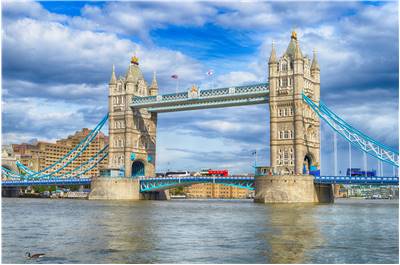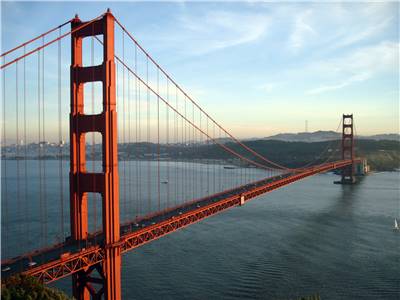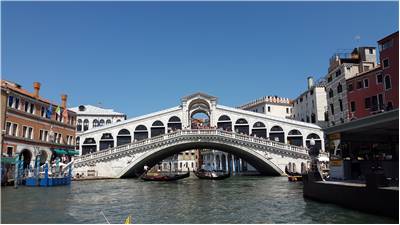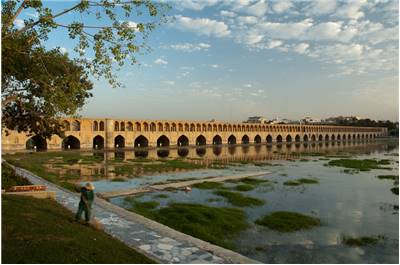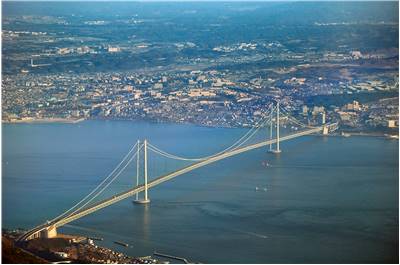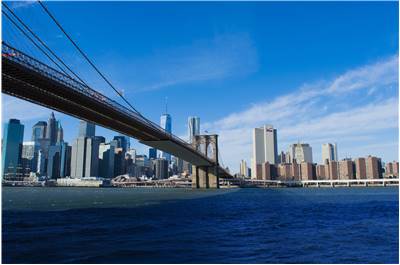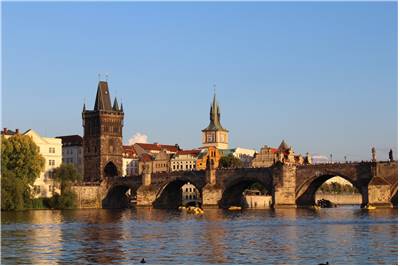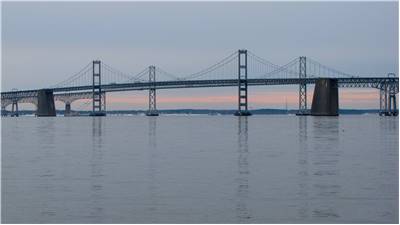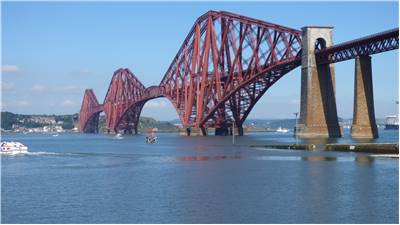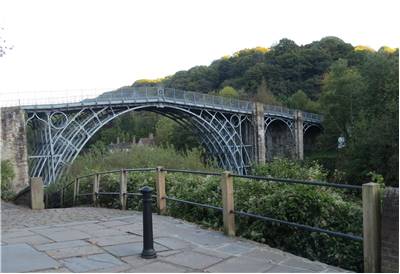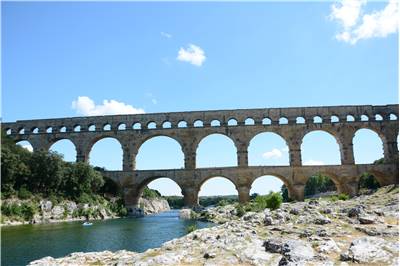List of Famous Bridges
Modern bridges are architectural constructions built to span physical obstacles to provide easy passage. Even though their function is simple and clear, the mere presence of these large man-made objects has transformed many of them into cultural or historic landmarks of great importance to the local population, nations or even entire world. Their versatility in function, structural form, and visual appeal have enabled them to become easily integrated into any environment, where they are hailed as integral parts of transportation infrastructure or even highly influential because of their notable engineering or design features.
Most famous bridges in the world have managed to distinguish themselves by having various features that make them distinct among tens of thousands of notable bridges that are currently in use all over the world. Those features may be their size, visual appeal, use of brand new construction techniques, use of new construction material, historical or cultural importance, and many others.

Here are some of the most famous bridges in the world:
London Tower Bridge
London Tower Bridge is one of the most iconic structures of this old city. Set on the river Thames and built with a combinations of suspension (static) and bascule (moveable) elements, the defining feature of this bridge are two enormous towers connected by two parallel walkways. During early years of its history, this bridge was famously known as “Tower of London,” named by the royal prison that was located in the towers.
Golden Gate Bridge
The modern history of bridge building is defined by several magnificent structures, out of which Golden Gate bridge in San Francisco is hailed as being one of the most recognizable ones. Designed by the architect mastermind Joseph B. Strauss, this bright red bridge dominates strait of Golden Gate between the city of San Francisco and Marin County to the north. This 894,500-ton marvel of modern engineering remained the longest suspension bridge in the world until 1964 and the construction of Japan's Akashi-Kaikyo Bridge.
Millau Bridge
Millau Bridge located on the uneven grounds of southern France represents one of the crowning achievements of European bridge building. Its impressive characteristics, such as the total distance of almost 2.5 kilometers,343 meters elevation from the ground, and the inclusion of eight large spans, made this bridge instantly took the breath away when it was constructed in 2004 with the price tag of incredible 394 million Euro.
Rialto Bridge
Venice is a city of thousand bridges, but one managed to distinguished itself from the rest and became an architectural icon of the city. Single-arched Rialto Bridge was built in 1591 under the oversight of the architect Antonio da Ponte whose controversial non-Romanesque proposal outperformed even those of famous Michelangelo. Rialto Bridge spans the Grand Canal of Venice, connecting the center of the city and the famous Rialto Markets on the same place where old and unreliable wooden pontoon bridges served the Venice for centuries.
Si-o-se Pol
Si-o-se Pol is one of the most famous bridges created in the entire Middle East, featuring an incredible design of 33 arches over river Zayanderud that together span distance of almost 300 meters. Hailed as the most impressive of the eleven bridges in Isfahan, Iran, Si-o-se Pol is regarded today as the shining example of the Safavid bridge school of art.
Stari Most
Stari Most (Old Bridge) is the most famous bridge design of Ottoman Turks. Dating from 1566, it stood over the river Neretva in the city of Mostar (Bosnia and Herzegovina) in almost perfect untouched state until for centuries it got damaged during the War in Bosnia and Herzegovina in the 1990s. The newly restored bridge still showcases all the beauty of this striking looking single-arched bridge.
Sydney Harbor Bridge
Sydney Harbor Bridge is one of the best known and most photographed bridges in the world. Since its opening in 1932 it managed to capture the imagination of millions of tourists who visit Sidney, and together with Sydney Opera house, it instantly became one of the most recognizable architectural symbols of the entire continent of Australia, and its colorful decorations are frequently showcased during New Year’s Eve celebrations.
Akashi Kaikyo
This 3.9-kilometer suspension bridge connects the Japanese mainland of Honshu to the Awaji Island, passing over the dangerous Akashi Strait that claimed several passenger ferries in the 1950s. Designed by the Satoshi Kashima who oversaw the construction of the bridge that started in 1988 with a budget of around $3.6 billion, Akashi Kaikyo bridge and it record-setting central span that is almost 2 km long became opened for public use on April 5, 1998. This massive and very expensive project of Japanese government paid off, connecting Awaji Island with the rest of the Japan road network and becoming a new part of the Honshu–Shikoku Highway.
Bridge of Sighs
No bridge in the world has managed to become such a synonym for a renaissance period as a Ponte dei Sospiri, a small prison bridge that connected government offices with a nearby prison in the center of the iconic Italian city of Venice. Built in early years of 17th century, this bridge immediately captured the imagination of the public, spawning several myths and serving as an inspiration to several similar bridges that were built across the world.
Originally believed to be the last point from which Venetian prisoners would be able to see the beauty of the city before they were executed, in modern times this bridge became connected with the tourist-friendly myth of ever-lasting love.
Brooklyn Bridge
Built between 1869 and 1883, this large hybrid cable-stayed/suspension bridge is hailed today as one of the oldest surviving roadway bridges in the United States. Designed by John Augustus Roebling, his son Washington Roebling, and his wife Emily Warren Roebling, Brooklyn Bridge features two colossal towers and an intricate network of cables that keep the 5.9 kilometers of decking above the East River, connecting the boroughs of Manhattan and Brooklyn.
Immediately after it was opened to the public on May 24, 1883, Brooklyn Bridge (then called New York and Brooklyn Bridge or East River Bridge) became one of the most impressive landmarks in New York City. It’s almost half a kilometer central span was 50% longer than any other at that time. Today, the renovated Brooklyn Bridge features additional decking that is intended only for pedestrian and bicycle use.
Charles Bridge
The center of the city of Prague would not be the same without the presence of one of the most impressive Gothic structures ever to be made. Charles Bridge was the centerpiece of the medieval Prague road network, and as such, it was protected by large gothic towers to be not only one of the most important military defense points of the city but also as a showcase of rich Czech history and art. After centuries of use as a road bridge, today this 515m bridge serves as a reminder of more than 600 years of European history.
After numerous renovations that happened over its lifetime, Charles Bridge became famous all around the world in the early 1700s with its avenue of 30 mostly baroque statues that showcased the artistic prowess of Czech sculptors and artists.
Chesapeake Bay Bridge
Very few bridges in the world have ever been described as one of the “seven engineering wonders of the modern world,” but the mega-structure Chesapeake Bay Bridge deserved to be called that way. Completed in 1964 with the budget of around $200 million, this almost 7-kilometer-long bridge easily connects Eastern Shore region of US state of Maryland with urbaner Western Shore as the part of the U.S. Route 50 and US Route 301. In the following years after the original construction, Chesapeake Bay Bridge gained an additional parallel span, and since then each span of the bridge is used for a single travel direction (one for westbound and one for eastbound).
The position of this bridge makes it one of the most popular crossings of the Chesapeake Bay, which has proven to lead to regular periods of congestion during peak travel hours. The expected rise in traffic density will soon be alleviated with the construction of a parallel tunnel that would become part of the existing Chesapeake Bay Bridge roadway network.
Coronado Bridge
Travel congestion of ferries between the cities of San Diego and Coronado pushed government officials to fast-track building of the bridge that will span the wide San Diego Bay in a unique way. After winning a 1978 World Bridge Beauty Contest, the bridge design of the Robert Mosher was finally realized and opened to the public on August 3, 1939. Created with 32 spans (with 21 of its piers being located in water), this bridge managed to effortlessly reduce the traffic congestion between these two cities with five car lanes (two for both directions and a modular middle one) and to provide enough clearance that even the largest ships of the US Navy could pass below its massive central span that is 200m wide and 61m high.
Forth Bridge
Forth Bridge is a large 2.467-meter-long cantilever bridge, located 14 kilometers west of the Edinburgh City Centre where it spans the Firth of Forth, wide estuary of several Scottish rivers. Located between villages of South Queensferry and North Queensferry, this bridge became an integral part of the railway network that spans the England, Scotland, and Wales. Originally designed by Sir John Fowler and Sir Benjamin Baker and released for the rail traffic on March 4, 1890, this bridge today holds significant importance to the Scottish nation where it was voted as Scotland's greatest man-made wonder in 2016.
Iron Bridge
The history of bridge design would not be the same without the presence of the Iron Bridge, a first bridge made out of cast iron. Located in the Shropshire, heart of England’s Industrial Revolution, and spanning the deep Severn Gorge, this bridge managed to revitalize private and commercial travel in the region and popularize the use of cast iron as the construction material . Built with the oversight of the designer Thomas Farnolls Pritchard between 1777 and 1779, this bridge immediately popularized the region as the viable tourist destination. Today, the bridge and the surrounding Severn Gorge area are protected as cultural and heritage sites of highest importance.
Mackinac Bridge
The defining feature of the Straits of Mackinac is an 8-kilometer-long bridge known previously as Big Mac or Mighty Mac. Constructed in 1957 under the oversight of the designer and David B. Steinman after decades of deliberations and delays, this bridge dramatically reduced the traffic congestion in the area, putting out of service numerous ferries that transported people and cars across that part of Great Lakes. Although the bridge has a simple design, it’s staggering size puts it apart from other similar bridges – it has a central span of 1,158 meters and is the longest suspension bridge with two towers between anchorages in the Western Hemisphere.
Pont du Gard
Ancient Roman architects created many impressive structures, but one of their most enduring ones was the aqueduct bridge that crosses Gardon River in southern France. As part of the larger Nîmes aqueduct, this 48.8-meter-tall aqueduct bridge with more than 50 arches was instrumental for transporting clear water from springs of Ucetia to the city of Nemausus and its 50 thousand inhabitants. After centuries of use, the lowest tier of the bridge was partially modified to allow transport of people and was augmented by a side bridge with traditional decking in the 18th century. Today, Pont du Gard is regarded as a national treasure of France and one of its most popular tourist destinations.
Ponte Vecchio
The scenic view of the city center of the Italian city of Florence is greatly enhanced with the presence of one of its most prized structures – ancient Ponte Vecchio bridge that has for hundreds of years housed stores of goldsmiths and artisans. Enhanced in numerous ways throughout the ages, this incredible example of early medieval Italian engineering stands tall today as one of the most famous examples of European Renaissance.




